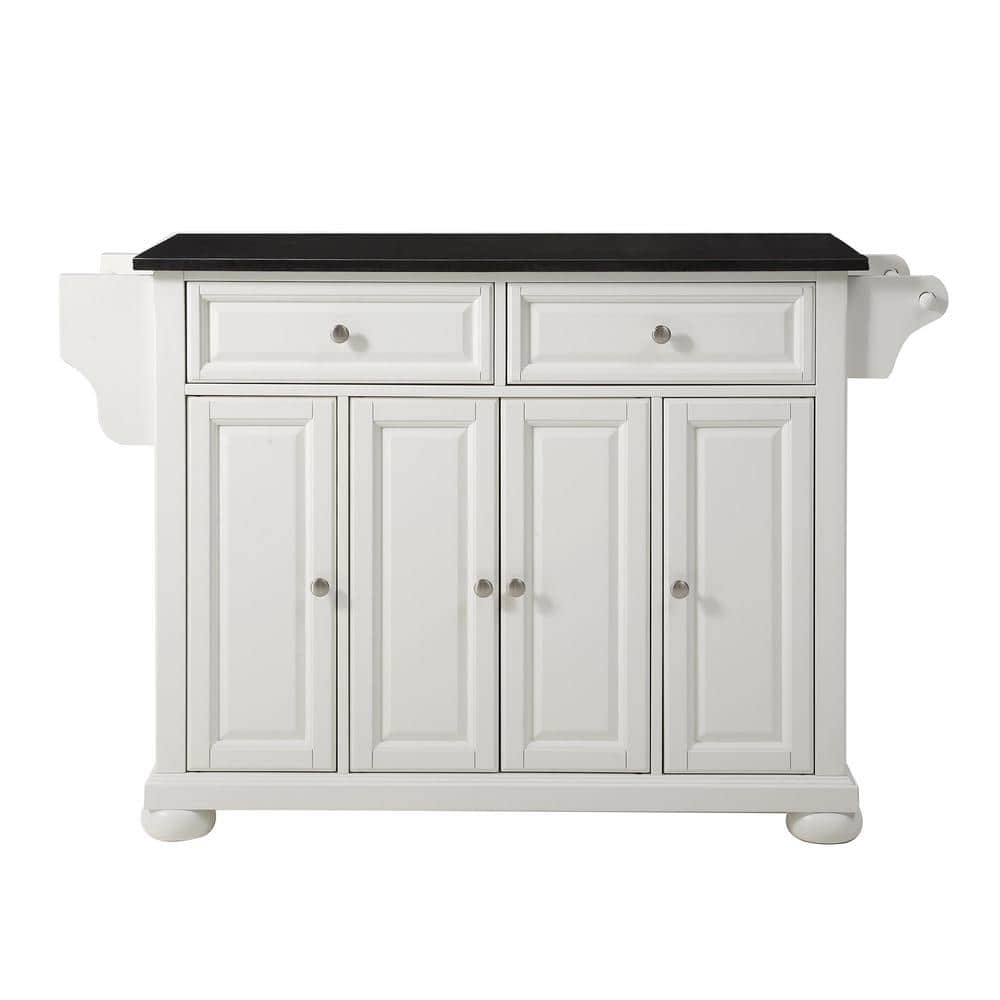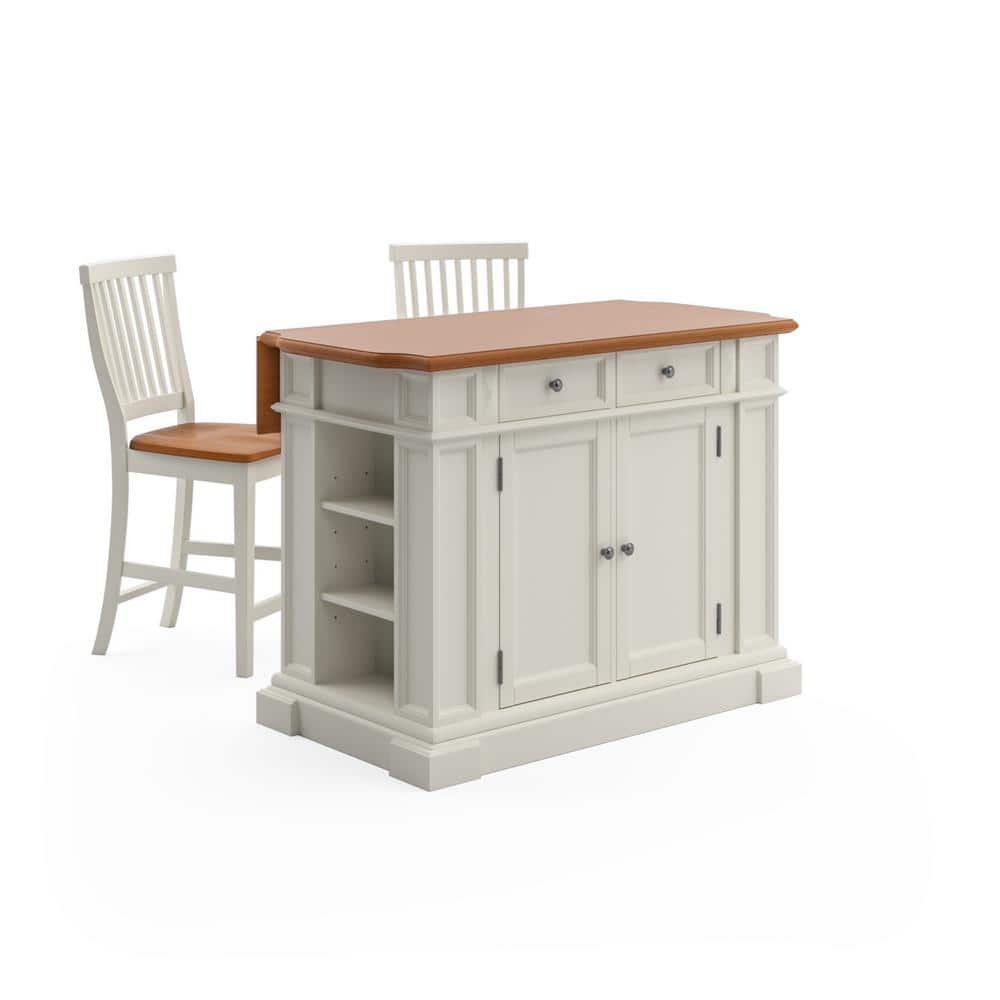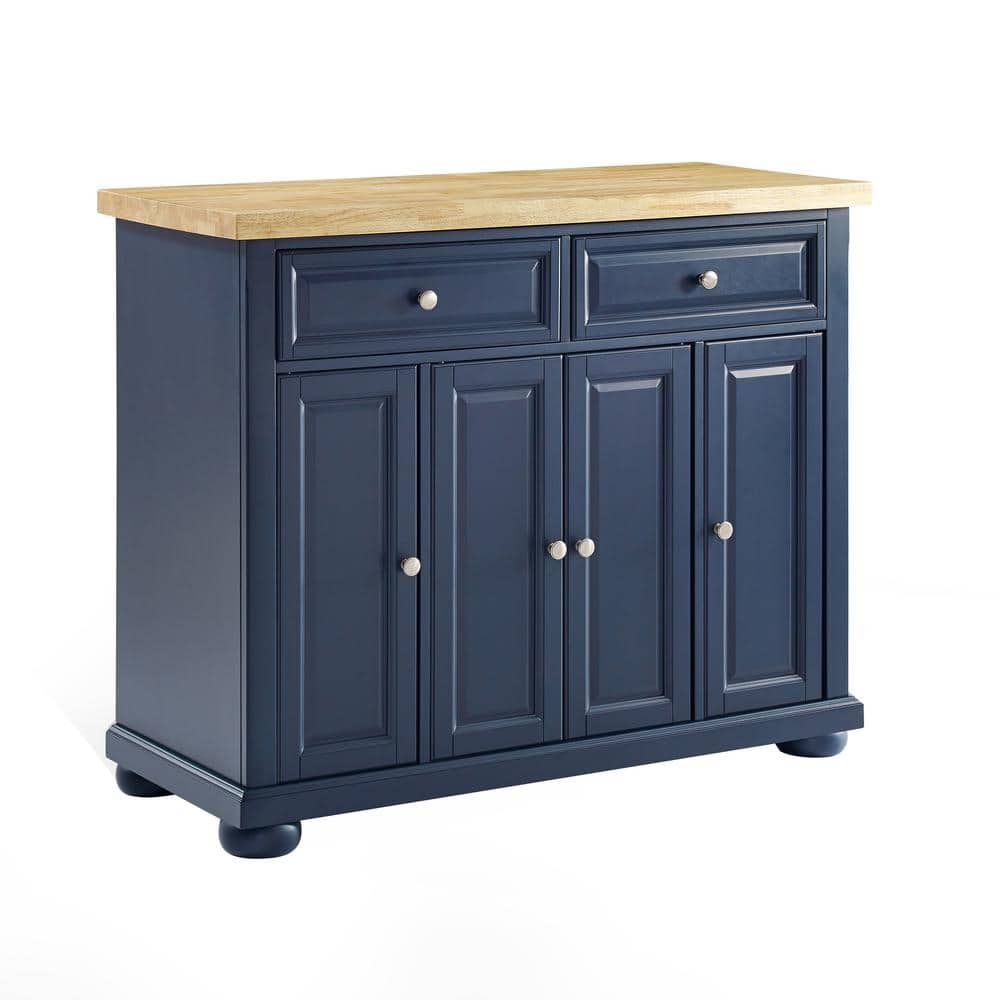CROSLEY FURNITURE Alexandria White Kitchen Island with Black Granite Top
Made of solid hardwood and wood veneer with a black granite top. 3 adjustable cabinet shelves and 2 drawers for storing utensils. Features a spice rack and towel bar on either end for convenience.
Constructed of a granite top, solid hardwood and wood veneers, this kitchen island is designed for longevity. The beautiful raised panel doors and drawer fronts provide the ultimate in style to dress up your kitchen. 2-deep drawers are great for anything from utensils to storage containers. Behind the 4-doors, you will find adjustable shelves and an abundance of storage space for things that you prefer to be out of sight. Style, function and quality make this kitchen island a wise addition to your home.
- Transitional design
- Granite top
- Constructed of solid hardwood and wood veneers
- Hand rubbed, multi-step finish
- Beautiful raised panel doors
- Antique brass finish hardware
- 3 -adjustable shelves inside cabinet
- Spice rack with towel bar
- Towel bar/paper towel holder
Additional information
| Dimensions | H 36 in, W 51.5 in, D 18 in |
|---|---|
| Depth | Narrow (Under 21 in.) |
| Width | Standard (40-55 in.) |
| Manufacturer Warranty | 90 Day Replacement Part Warranty, No Returns |






by Gerald
although there are a lot of working parts to put together i took my time and followed the instructions. the end result is a very nice addition to my kitchen
by Janet
Very pleased. Solid piece of furniture. Well packaged and organized making it easy to put together.
by Patrick
Love it. Fits perfectly in the space and hopefully will provide the extra storage I am needing.
by John
It is very nice Took a little time to set up.